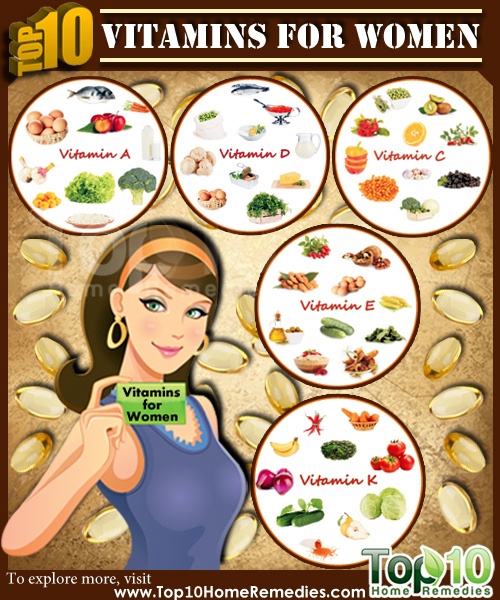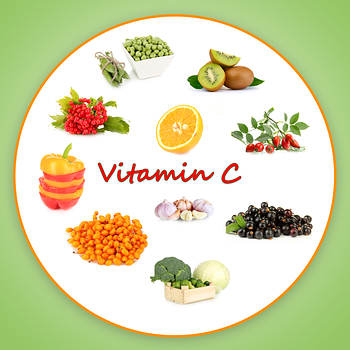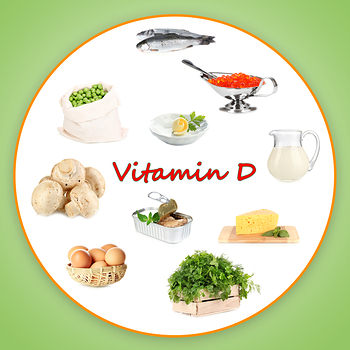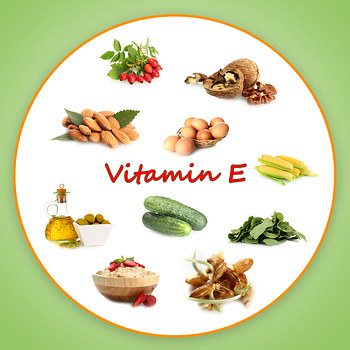Many health-conscious women choose to follow a healthy diet plan. A healthy diet plan is one that includes many nutrient-dense foods and limits processed foods with little nutritional value. Women of every age, weight, and activity level need to consume a wide variety of vitamins to have optimal health and prevent different types of health problems.
Multivitamin/mineral (MVM) supplements came about in the early 1940s and have ever since earned the patronage of health-conscious people the world over.
The current popularity of MVMs can be gauged from the fact that over one-third of all Americans are estimated to take these dietary supplements, which accounts for almost one-sixth of all purchases of dietary supplements and 40% of all sales of vitamin and mineral supplements.[22]
However, as these supplements are not FDA approved, you must seek your doctor’s consultation before starting them to determine the correct dosage and to rule out the possibility of adverse reactions or side effects. Besides, why go for a synthetic substitute when you can naturally get your nutritional needs through a healthy, well-balanced diet that is rich in all the vitamins and minerals you need?
Vitamins are organic compounds that help different parts of the body function and develop properly. Each of the different vitamins performs a specific function. A deficiency of needed vitamins can contribute to some serious health problems. This is why it is essential to get vitamins from the foods you eat or, if necessary, from vitamin supplements.
Vitamins for a Healthy You
There are a number of essential vitamins that play a crucial role in the body’s growth and functioning, most of which can be derived from proper dietary intake alone.
Vitamin supplements can come to the rescue if your diet falls short, provided your doctor signs off on it. For instance, people who consume a vegetarian diet often rely on supplements to meet their vitamin B12 needs.
There are also certain vitamins that are synthesized within the body itself, such as vitamin D (activated by sunlight) and K.
A well-functioning body simply cannot do without the following vitamins:[1]
Each of the above-listed vitamins has a specific role to play in ensuring that your body is performing at its best. By the same logic, the deficiency of any of these key nutrients can compromise your health and immunity, setting the ground for potential ailments.
Low levels of B vitamins in the body, for instance, can lead to anemia or increased risk of heart disease.
Certain vitamins also play a preventative role in warding off specific medical problems. Case in point, Vitamin A, which is known to prevent night blindness.
Important Vitamins for Women
Here are the vitamins that are especially needed by women.
1. Vitamin A
Vitamin A contains antioxidant properties. Women of all ages need vitamin A as it aids in cell differentiation and gene regulation.
Vitamin A also has an important role in eye health, slowing down the aging process and boosting the immune system.[2] It is also known to cause birth defects in pregnancy, so there must be a reduction in the dosage during this period. Most prenatal vitamins take this into consideration.
According to the National Institutes of Health (NIH), the recommended dietary allowances (RDAs) for vitamin A are as follows:[3]
| Age | Female | Pregnancy | Lactation |
| 0–6 months* | 400 mcg RAE | ||
| 7–12 months* | 500 mcg RAE | ||
| 1–3 years | 300 mcg RAE | ||
| 4–8 years | 400 mcg RAE | ||
| 9–13 years | 600 mcg RAE | ||
| 14–18 years | 700 mcg RAE | 750 mcg RAE | 1,200 mcg RAE |
| 19–50 years | 700 mcg RAE | 770 mcg RAE | 1,300 mcg RAE |
| 51+ years | 700 mcg RAE |
*Adequate Intake (AI), equivalent to the mean intake of vitamin A in healthy, breastfed infants.
Foods that are rich in vitamin A include carrots, cantaloupe, pumpkin, apricots, tomatoes, watermelon, green leafy vegetables, sweet potatoes, guava, broccoli, kale, papaya, peaches, red peppers, spinach, eggs, liver, milk, and fortified cereals.
The highest sources of vitamin A according to the NIH:
| Sweet potato, baked in skin, 1 whole | 561 mg |
| Beef liver, pan fried, 3 ounces | 444 mg |
| Spinach, frozen, boiled, ½ cup | 229 mg |
| Carrots, raw, ½ cup | 184 mg |
| Pumpkin pie, commercially prepared, 1 piece | 249 mg |
Vitamin A comes in two forms, preformed vitamin A from animal sources, and provitamin A (beta carotene) from plant foods. The risk of getting too much vitamin A is considered rare but can happen especially with supplemental vitamin A.
Pregnant women should not get too much vitamin A (10,000 IU) from supplemental or preformed sources as this level may cause genetic abnormalities in the growing fetus.
Certain skin medication may contain retinoids or another vitamin A forms; these should be avoided, and alternatives considered.[27] Therefore, consult your doctor about any medications and vitamin A levels when pregnant.
2. Vitamin B2
Known as riboflavin, vitamin B2 is essential for good health, normal growth, and metabolism. It helps the body break down food for energy, is used during growth and development, and can act as an antioxidant to combat free radical-induced damage.[4]
A deficiency of vitamin B2 can affect the metabolism and influence the immune system and neural functions, which can cause pale eyes and tongue, a sore throat, mouth ulcers, cracks on the lips, dry hair, wrinkles, and itchy skin.
RDAs for riboflavin:[5]
| Age | Female | Pregnancy | Lactation |
| Birth to 6 months* | 0.3 mg | ||
| 7–12 months* | 0.4 mg | ||
| 1–3 years | 0.5 mg | ||
| 4–8 years | 0.6 mg | ||
| 9–13 years | 0.9 mg | ||
| 14–18 years | 1.0 mg | 1.4 mg | 1.6 mg |
| 19-50 years | 1.1 mg | 1.4 mg | 1.6 mg |
| 51+ years | 1.1 mg |
* Adequate Intake (AI).
Some of the foods providing vitamin B2 are organ meats, cheese, milk, yogurt, leafy vegetables, yeast, eggs, cereals, whole grains, soybeans, almonds, nuts, and mushrooms.
The highest sources of vitamin B2 according to the NIH:
| Food | Percent DV* |
| Beef liver, pan-fried, 3 ounces | 171 mg |
| Breakfast cereals, fortified with 100% of the DV for riboflavin, 1 serving | 100 mg |
| Oats, instant, fortified, cooked with water, 1 cup | 65 mg |
| Yogurt, plain, fat-free, 1 cup | 35 mg |
| Milk, 2% fat, 1 cup | 29 mg |
*DV = Daily Value.
3. Vitamin B6
Vitamin B6, also known as pyridoxine, is an essential vitamin that can aid in lowering the risk for cardiovascular disease and is involved in over 100 reactions in the body. B6 also plays an important role in protein metabolism.[7]
RDAs for vitamin B6.[7]
| Age | Female | Pregnancy | Lactation |
| Birth to 6 months | 0.1 mg* | ||
| 7–12 months | 0.3 mg* | ||
| 1–3 years | 0.5 mg | ||
| 4–8 years | 0.6 mg | ||
| 9–13 years | 1.0 mg | ||
| 14–18 years | 1.2 mg | 1.9 mg | 2.0 mg |
| 19–50 years | 1.3 mg | 1.9 mg | 2.0 mg |
| 51+ years | 1.5 mg |
* Adequate Intake (AI).
In a 2016 study published in Nutrients, vitamin B6 was found to be helpful in the regulation of blood sugar levels. Pregnant women are often advised to consume foods rich in vitamin B6 for a number of reasons.
First, this vital vitamin helps to relieve morning sickness, a common complaint experienced by most expecting women. Secondly, women who do not get enough vitamin B6 during their pregnancy are at a greater risk of anemia. Thus, maintaining adequate levels of vitamin B6 is crucial at conception and throughout the pregnancy to ensure healthy pregnancy outcomes.[6]
Some of the best foods that provide vitamin B6 include fortified cereals, avocados, bananas, meats, beans, fish, oatmeal, nuts, seeds, and dried fruits.
Preferred food choices with high vitamin B6 content:
| Chickpeas, canned, 1 cup | 55 mg |
| Beef liver, pan fried, 3 ounces | 45 mg |
| Tuna, yellowfin, fresh, cooked, 3 ounces | 45 mg |
| Salmon, sockeye, cooked, 3 ounces | 30 mg |
4. Vitamin B7
Vitamin B7, also known as biotin, is required for cell growth and synthesis of fatty acids.[9]
A study in 2017 published in Skin Appendage Disorders stated that vitamin B7 keeps the sweat glands, hair, and skin healthy.[8] In fact, it promotes hair growth and helps treat brittle nails. Also, vitamin B7 is required for bone growth and bone marrow production and helps maintain normal cholesterol levels.
Adequate Intakes (AIs) for Biotin:[9]
| Age | Female | Pregnancy | Lactation |
| Birth to 6 months | 5 mcg | ||
| 7–12 months | 6 mcg | ||
| 1–3 years | 8 mcg | ||
| 4–8 years | 12 mcg | ||
| 9–13 years | 20 mcg | ||
| 14–18 years | 25 mcg | 30 mcg | 35 mcg |
| 19+ years | 30 mcg | 30 mcg | 35 mcg |
A deficiency in vitamin B7 can cause brittle hair, rashes, abnormal heart functioning, lethargy, anemia, and mild depression, although such deficiency is very rare.
Some of the best food choices to get vitamin B7 are fish, beef, eggs, sweet potatoes, almonds, carrots, bananas, cantaloupe, yellow fruits, green leafy vegetables, lentils, brown rice, peppers, egg yolks, soybeans, oatmeal, milk, cheese, yogurt, and nuts.
Some foods with the highest vitamin B2 content, according to NIH, are as follows:
| Beef liver, cooked, 3 ounces | 30.8 mg |
| Egg, whole, cooked | 10.0 mg |
| Salmon, pink, canned in water, 3 ounces | 5.0 mg |
5. Vitamin B9
Vitamin B9, also known as folic acid, is essential for every woman as it helps prevent heart disease, high blood pressure, Alzheimer’s disease, depression, cancer, and memory loss. It also enhances brain health and cellular functioning and improves fertility and fetal development during pregnancy.[25]
RDAs for folate:[11]
| Age | Female | Pregnancy | Lactation |
| Birth to 6 months* | 65 mcg DFE* | ||
| 7–12 months* | 80 mcg DFE* | ||
| 1–3 years | 150 mcg DFE | ||
| 4–8 years | 200 mcg DFE | ||
| 9–13 years | 300 mcg DFE | ||
| 14–18 years | 400 mcg DFE | 600 mcg DFE | 500 mcg DFE |
| 19+ years | 400 mcg DFE | 600 mcg DFE | 500 mcg DFE |
*Adequate Intake (AI).
The importance of maternal B9 adequacy cannot be stressed enough, without which both the mother and fetus can suffer health challenges.
This is corroborated by a 2013 study published in La Revue Du Praticien. The study concluded that a B9 deficiency in pregnant women can cause megaloblastic anemia, cardiovascular disease, and depression; it can also cause embryonic defects, in particular, neural tube defects (NTD) such as spina bifida, and cognitive impairment in the baby.[10][26]
Most prenatal vitamins contain 600-800 mcg of vitamin B6 and that is sufficient for most pregnancies, and it is recommended to start taking the vitamin 1 month prior to pregnancy. If you have had a child with NTD, then 4 mg is recommended, but be sure to discuss with your physician.[26][27]
Foods rich in vitamin B9 include beef liver, dark leafy green vegetables, orange juice, asparagus, melons, strawberries, fortified grains, legumes, beans, nutritional yeast, and eggs.
The NIH recommends the following foods to increase your vitamin B9 intake:
| Beef liver, braised, 3 ounces | 54 mg |
| Spinach, boiled, ½ cup | 33 mg |
| Black-eyed peas (cowpeas), boiled, ½ cup | 26 mg |
| Breakfast cereals, fortified with 25% of the DV† | 25 mg |
6. Vitamin B12
Another essential vitamin that every woman should consume is B12, which is important for metabolism, normal cell division, and protein synthesis. This vitamin helps prevent heart disease, memory loss, and anemia.
It also can be used to treat depression and maintain a healthy nerve system and brain functioning.[24]
RDAs for vitamin B12:[13]
| Age | Female | Pregnancy | Lactation |
| 0–6 months* | 0.4 mcg | ||
| 7–12 months* | 0.5 mcg | ||
| 1–3 years | 0.9 mcg | ||
| 4–8 years | 1.2 mcg | ||
| 9–13 years | 1.8 mcg | ||
| 14+ years | 2.4 mcg | 2.6 mcg | 2.8 mcg |
*Adequate Intake (AI)
A 2010 study published in Nutrients found that insufficient levels of vitamin B12 in the body can lead to increased irritability, depression, and confusion. Although the long-term consequences of a vitamin B12 deficiency are not conclusively established, it may adversely affect vascular, cognitive, bone, and eye health.
Pregnant women should be extra careful about meeting their B12 needs to ensure positive pregnancy outcomes. A lack of vitamin B12 can also cause tongue and mouth inflammation.[12]
People at risk of B12 deficiency include the elderly, vegans, people with diabetes, those with folate deficiencies, and postsurgical clients where part of their bowel that absorbs B12 was removed.[28]
Some of the best food sources for vitamin B12 are cheese, eggs, fish, meat, milk, yogurt, and fortified breakfast cereals.[26]
| Clams, cooked, 3 ounces | 1,402 mg |
| Liver, beef, cooked, 3 ounces | 1,178 mg |
| Nutritional yeasts, fortified with 100% of the DV for vitamin B12, 1 serving | 100 mg |
7. Vitamin C
Known as an immunity booster, vitamin C has many health benefits for women. It helps speed up the healing process, promotes tissue growth, and may help reduce the risk for certain kinds of cancer, heart disease, and tissue damage.
It also plays a key role in the formation of collagen and helps in the healing process.[23] Vitamin C helps promote healthy gums, teeth, and bones for the mother and baby in pregnancy, too.[27]
RDAs for vitamin C:[15]
| Age | Female | Pregnancy | Lactation |
| 0–6 months | 40 mg* | ||
| 7–12 months | 50 mg* | ||
| 1–3 years | 15 mg | ||
| 4–8 years | 25 mg | ||
| 9–13 years | 45 mg | ||
| 14–18 years | 65 mg | 80 mg | 115 mg |
| 19+ years | 75 mg | 85 mg | 120 mg |
*Adequate Intake (AI).
The vitamin C needs of those who smoke are greater than those of nonsmokers, with the former needing 35 mg/day more vitamin C than the latter.
A study in 2014 published in Advances in Nutrition: An International Review Journal reported that considerable epidemiologic literature has established a link between poor levels of vitamin C and an increased propensity for developing cardiovascular diseases (CVDs), including coronary heart disease, ischemic stroke, and hypertension.[14]
Some of the best vitamin C-rich foods are broccoli, grapefruits, kiwi, oranges, peppers, potatoes, strawberries, sprouts, and tomatoes.
| Food | Percent (%) DV* |
| Red pepper, sweet, raw, ½ cup | 158 mg |
| Orange juice, ¾ cup | 155 mg |
| Orange, 1 medium | 117 mg |
| Grapefruit juice, ¾ cup | 117 mg |
| Kiwifruit, 1 medium | 107 mg |
*DV = Daily Value.
8. Vitamin D
Vitamin D is a fat-soluble vitamin that promotes the absorption of calcium, which plays a key role in keeping the bones strong. Vitamin D also may help reduce the risk of multiple sclerosis, rheumatoid arthritis, and various types of cancer. The RDAs according to NIH for vitamin D is 400-600 IU.[16]
According to a 2013 study published in Clinical Medicine Insights: Women’s Health, maintaining a steady and sufficient supply of vitamin D is especially critical for women as they suffer great morbidity and mortality related to osteoporosis and fractures. The likelihood of such bone-related ailments can be decreased through interventions such as ensuring sufficient vitamin D intake.[17]
Vitamin D can also help reduce premenstrual syndrome symptoms and protect your eyesight.
Short daily exposure to sunlight can give your body the required dose of vitamin D. For most light-skinned people, an exposure of 10 to 15 minutes is sufficient to produce enough vitamin D for the body. However, the sun’s rays need to be at a certain specificity, which is only during the summer months for Northern climates.
In addition to getting vitamin D from sunlight, you can eat foods that are rich in vitamin D such as fatty fish, fortified milk, liver, and eggs.[27]
The NIH-recommended food choices to increase your daily intake of vitamin D include:
| Cod liver oil, 1 tablespoon | 340 mg |
| Swordfish, cooked, 3 ounces | 142 mg |
| Salmon (sockeye), cooked, 3 ounces | 112 mg |
9. Vitamin E
Vitamin E contains antiaging properties that protect the cells from damage and slow down age-related changes in your body. This vitamin also helps prevent heart disease, cataracts, memory loss, and certain types of cancer.
Vitamin E helps decrease nerve pain.[29] It has also been shown to help in preventing preeclampsia and retarding the progression of Alzheimer’s disease in patients already diagnosed.[30]
The scientific community has shown a great deal of interest in the antioxidant potential of vitamin E. A 2018 study published in Antioxidants analyzed how vitamin E contributes to female reproductive health in the capacity of an antioxidant. Among other health benefits, vitamin E has been found to lower body cholesterol levels and act as an anticancer agent.[18]
Vitamin E is also essential for healthy skin and hair. It is often included in hair and skin care products.
Vitamin E is found naturally in some foods, added to others, and available as a dietary supplement. “Vitamin E” is the collective name for a group of fat-soluble compounds with distinctive antioxidant activities. The RDA according to the NIH for vitamin E is 15 mg.[19]
Foods that are rich in vitamin E include wheat germ, hazelnuts, almonds, spinach, margarine, corn oil, cod liver oil, peanut butter, safflower oil, and sunflower seeds.
Some of the most vitamin E-rich foods, as suggested by the NIH, are as follows:
| Wheat germ oil, 1 tablespoon | 100 mg |
| Sunflower seeds, dry roasted, 1 ounce | 37 mg |
| Almonds, dry roasted, 1 ounce | 34 mg |
| Sunflower oil, 1 tablespoon | 28 mg |
High doses of vitamin E can have some adverse effects on people with any of these conditions:
- Vitamin K deficiency (vitamin E may decrease the effects of vitamin K)
- Bleeding disorders
- Diabetes
- Retinitis pigmentosa
- History of previous heart attack or stroke
- Head and neck cancer
Discuss with your doctor before taking any of these supplements. Your doctor will make sure your medical history and drug medication do not cause any problems.[29][30]
10. Vitamin K
Vitamin K plays a key role in promoting strong bones, maintaining normal blood clotting, and reducing the risk of various heart diseases. This particular vitamin is also necessary for immune functioning and energy.
Adequate intakes (AIs) for vitamin K:[21]
| Age | Female | Pregnancy | Lactation |
| Birth to 6 months | 2.0 mcg | ||
| 7–12 months | 2.5 mcg | ||
| 1–3 years | 30 mcg | ||
| 4–8 years | 55 mcg | ||
| 9–13 years | 60 mcg | ||
| 14–18 years | 75 mcg | 75 mcg | 75 mcg |
| 19+ years | 90 mcg | 90 mcg | 90 mcg |
A 2015 study published in Open Heart found osteoporosis to be one of the primary causes of fractures worldwide, accounting for more than 8.9 million fractures every year. There is a far greater incidence of this disorder among the female population, with an estimated 200 million women affected by it the world over.
The findings of one clinical trial showed that vitamin K1 alone can reduce the risk of fractures and cancer, although more data are needed to confirm these benefits.[20]
Some of the best food sources of vitamin K are whole-grain food products, green leafy vegetables, soybean oil, and fish oil.
Most multivitamins have at least 75% of the recommended dosage, but if needed, the following foods with the highest vitamin K content, according to the NIH, can be consumed:[21]
| Natto, 3 ounces (as MK-7) | 1,062 mg |
| Collards, frozen, boiled, ½ cup | 662 mg |
| Turnip greens, frozen, boiled, ½ cup | 532 mg |
| Spinach, raw, 1 cup | 181 mg |
| Kale, raw, 1 cup | 141 mg |
| Broccoli, chopped, boiled, ½ cup | 138 mg |
How Do Women’s Nutritional Needs Differ From Men’s?
Throughout childhood, the nutritional needs of girls and boys remain more or less the same. However, once a girl crosses the threshold of puberty and the monthly menstrual cycle sets in, she starts to develop unique nutritional requirements.
The female body goes through various transitional phases with advancing age, in terms of both physical and hormonal changes. Whether it be menstruation, pregnancy, or menopause, these biological landmarks in a woman’s life can be quite exacting on the body and increase the risk of anemia, weakened bones, and osteoporosis.
So, even though the caloric needs of women are lower than men, in some instances women require a higher intake of certain nutrients than their male counterparts. These include iron, magnesium, calcium, vitamin D, and vitamin B9 (folate). It is extremely important for women to adjust their dietary choices according to their evolving nutritional needs.
End Note
To conclude, eating a balanced, varied diet rich in fruit and vegetables each day is a good way to get all the essential vitamins. If you are not getting the required dose of vitamins from various foods, a vitamin supplement may be recommended, especially during pregnancy. However, before taking any supplement, consult your doctor.
Resources:
- MedlinePlus. https://medlineplus.gov/vitamins.html. Published April 29, 2019.
- Chea EP. Vitamin A. StatPearls [Internet]. https://www.ncbi.nlm.nih.gov/books/NBK482362/. Published October 27, 2018.
- Office of Dietary Supplements – Vitamin A. NIH Office of Dietary Supplements. https://ods.od.nih.gov/factsheets/VitaminA-HealthProfessional/.
- Peechakara BV. Vitamin B2 (Riboflavin). StatPearls [Internet]. https://www.ncbi.nlm.nih.gov/books/NBK525977/. Published April 1, 2019.
- Office of Dietary Supplements – Riboflavin. NIH Office of Dietary Supplements. https://ods.od.nih.gov/factsheets/Riboflavin-HealthProfessional/.
- Ho C-L, Quay TAW, Devlin AM, Lamers Y. Prevalence and Predictors of Low Vitamin B6 Status in Healthy Young Adult Women in Metro Vancouver. Nutrients. https://www.ncbi.nlm.nih.gov/pmc/articles/PMC5037525/. Published September 1, 2016.
- Office of Dietary Supplements – Vitamin B6. NIH Office of Dietary Supplements. https://ods.od.nih.gov/factsheets/VitaminB6-HealthProfessional.
- Patel DP, Swink SM, Castelo-Soccio L. A Review of the Use of Biotin for Hair Loss. Skin appendage disorders. https://www.ncbi.nlm.nih.gov/pmc/articles/PMC5582478/. Published August 2017.
- Office of Dietary Supplements – Biotin. NIH Office of Dietary Supplements. https://ods.od.nih.gov/factsheets/Biotin-HealthProfessional/.
- Guilland J-C, Aimone-Gastin I. Vitamin B9. La Revue du praticien. https://www.ncbi.nlm.nih.gov/pubmed/24298825. Published October 2013.
- Office of Dietary Supplements – Folate. NIH Office of Dietary Supplements. https://ods.od.nih.gov/factsheets/Folate-HealthProfessional/.
- O’Leary F, Samman S. Vitamin B12 in health and disease. Nutrients. https://www.ncbi.nlm.nih.gov/pmc/articles/PMC3257642/.
- Office of Dietary Supplements – Vitamin B12. NIH Office of Dietary Supplements. https://ods.od.nih.gov/factsheets/VitaminB12-HealthProfessional/.
- Lykkesfeldt J, Michels AJ, Frei B. Vitamin C. Advances in nutrition (Bethesda, Md.). https://www.ncbi.nlm.nih.gov/pmc/articles/PMC3884093/. Published January 4, 2014.
- Office of Dietary Supplements – Vitamin C. NIH Office of Dietary Supplements. https://ods.od.nih.gov/factsheets/VitaminC-HealthProfessional/.
- Office of Dietary Supplements – Vitamin D. NIH Office of Dietary Supplements. https://ods.od.nih.gov/factsheets/VitaminD-HealthProfessional.
- Bohon TM, Goolsby MA. The Role of Vitamin D Supplements in Women’s Health. Clinical medicine insights. Women’s health. https://www.ncbi.nlm.nih.gov/pmc/articles/PMC3941188/. Published October 20, 2013.
- Mohd Mutalip SS, Ab-Rahim S, Rajikin MH. Vitamin E as an Antioxidant in Female Reproductive Health. Antioxidants (Basel, Switzerland). https://www.ncbi.nlm.nih.gov/pmc/articles/PMC5836012/. Published January 26, 2018.
- Office of Dietary Supplements – Vitamin E. NIH Office of Dietary Supplements. https://ods.od.nih.gov/factsheets/VitaminE-HealthProfessional/.
- DiNicolantonio JJ, Bhutani J, O’Keefe JH. The health benefits of vitamin K. Open heart. https://www.ncbi.nlm.nih.gov/pmc/articles/PMC4600246/. Published October 6, 2015.
- Office of Dietary Supplements – Vitamin K. NIH Office of Dietary Supplements. https://ods.od.nih.gov/factsheets/VitaminK-HealthProfessional/.
- Office of Dietary Supplements – Multivitamin/Mineral Supplements. NIH Office of Dietary Supplements. https://ods.od.nih.gov/factsheets/MVMS-HealthProfessional/.
- DePhillipo NN, Aman ZS, Kennedy MI, Begley JP, Moatshe G, LaPrade RF. Efficacy of Vitamin C Supplementation on Collagen Synthesis and Oxidative Stress After Musculoskeletal Injuries: A Systematic Review. Orthopedic journal of sports medicine. https://www.ncbi.nlm.nih.gov/pmc/articles/PMC6204628/. Published October 25, 2018.
- Reynolds E. Vitamin B12, folic acid, and the nervous system. The Lancet. Neurology. https://www.ncbi.nlm.nih.gov/pubmed/17052662. Published November 2006.
- Greenberg JA, Bell SJ, Guan Y, Yu Y-H. Folic Acid supplementation and pregnancy: more than just neural tube defect prevention. Reviews in obstetrics & gynecology. https://www.ncbi.nlm.nih.gov/pmc/articles/PMC3218540/. Published 2011.
- ACOG Practice Bulletin No. 187 Summary: Neural Tube Defects. Obstetrics and Gynecology. https://www.ncbi.nlm.nih.gov/pubmed/29189691. Published December 2017.
- Guidelines in Perinatal Care. September 2017. Nutrition in Pregnancy. Chapter 17. https://www.acog.org/-/media/Womens-Health/nutrition-in-pregnancy.pdf.
- Watanabe, F, Yabuta Y., et al. Biologically active vitamin B12 compounds in foods for preventing deficiency among vegetarians and elderly subjects. J Agric Food Chem. July 2013. Epub July 2013. https://www.ncbi.nlm.nih.gov/pubmed/23782218/
- Rizvi S, Raza ST, Ahmed F, Ahmad A, Abbas S, Mahdi F. The role of vitamin e in human health and some diseases. Sultan Qaboos University medical journal. https://www.ncbi.nlm.nih.gov/pmc/articles/PMC3997530/. Published May 2014.
- Press D, Alexander M. Prevention of dementia. UpToDate. https://www.uptodate.com/contents/prevention-of-dementia. Published January 2018.







